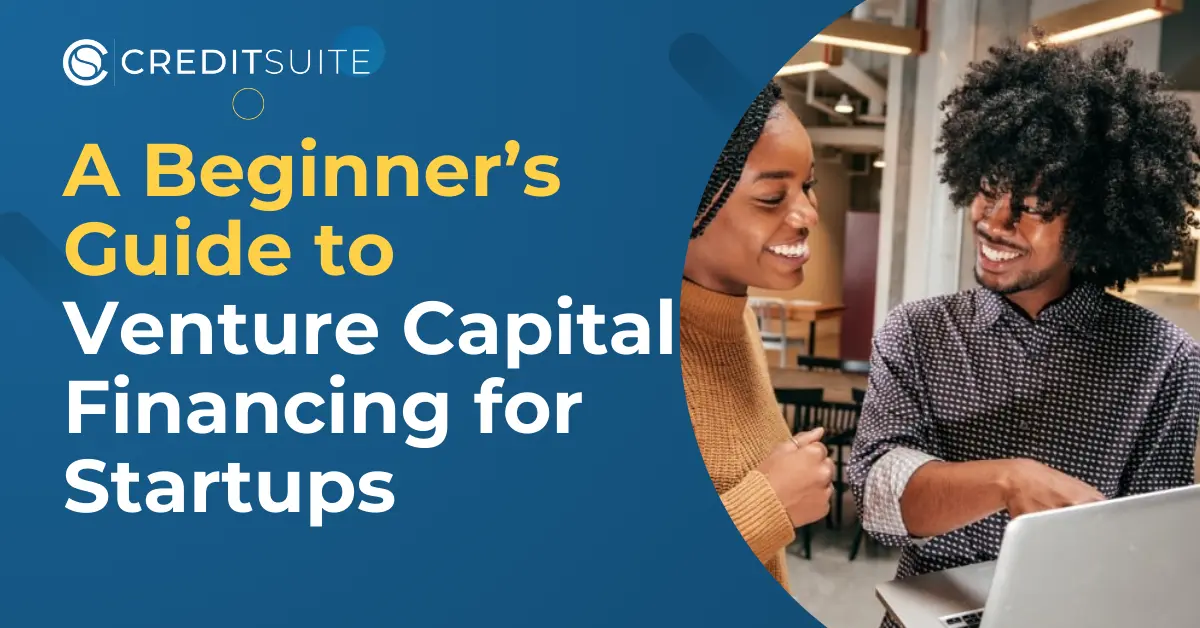Building a startup from the ground up is not a leisurely walk in the park. It’s a marathon straight up Mt. Everest, with 20% of startups failing within the first year.
And sadly, the numbers look even grimmer as you zoom out on the time horizon. Some studies indicate that nine out of every ten startups fail.
Why?
It all comes down to a lack of cash flow. Cash is king. And without a steady stream of working capital, you can’t pay rent, hire employees, or keep your operations running like a well-oiled machine.
But thankfully, there are ways to secure additional capital to keep your business afloat. That’s where venture capital financing comes into play.
Venture capital (VC) financing is a popular form of funding for startups, as it provides financial resources, mentorship, and connections to industry experts. However, the process of securing VC funding can be intimidating for new players to the game.
Don’t fret. In this beginner’s guide, we’ll share the basics of venture capital financing and everything you need to know to successfully secure funding for your startup and avoid succumbing to the statistics.
Are you ready to learn more?
Let’s dive in.
What is venture capital financing?
First, it’s important to understand what venture capital is and how it’s different from other forms of funding.
Venture capital is a type of private equity investing in early-stage, high-growth companies where investors look for startups that have the potential to generate a significant return on their investment (read: looking for the next Uber or Airbnb).
VC funding is different from traditional financing forms, like securing a business loan from the bank or participating in crowdfunding, which typically have lower risk and returns expectations.
Venture capital firms provide financial resources, mentorship, and connections to industry experts, in exchange for an equity stake in your company. And as a startup founder, you might lack the experience and connections necessary to navigate the industry.
Venture capitalists can provide useful advice and guidance on everything from changing to a C corp from an LLC, any business formation fees, ideas around product development, and a complete revamp of your marketing strategy. In other words, they offer the complete package.
Stages of venture capital financing
Raising money via venture capital typically progresses through multiple stages (also known as series or rounds). The number of rounds you may need depends on your growth trajectory and if you haven’t met your previous funding goals.
The main stages of venture capital financing include:
- Seed stage (Seed Capital): In the seed round, funding goes towards developing your business plan, conducting market research, and solidifying a prototype of your product or service.
- Early-stage (Series A): Series A funding helps your startup reach the revenue generation phase by developing and marketing your product and building the infrastructure necessary for scaling your business.
- Expansion stage (Series B): This stage focuses on funding the growth and expansion of an established company. The funding goes towards expanding customer interest and scaling marketing and sales strategies.
- Later-stage (Series C): As the name suggests, this funding stage occurs later and focuses on building new products and markets, establishing a strong customer base, and acquiring other companies.
Example of venture capital financing
Let’s look at a simple example to get the basics down pat.
Let’s say a startup company called “GreenLeaf Technologies” develops sustainable and eco-friendly packaging solutions. The co-founders bootstrapped the company for two years and secured a few small contracts. But now, they need more funding to scale up operations and bring the product to mass market.
That’s where venture capital firms come in. A firm, let’s call it “EcoFund Ventures,” invests in companies focused on environmental sustainability. They see the potential in GreenLeaf Technologies (a solid product and market fit) and decide to invest $10 million in the company in exchange for a 20% equity stake.
With the new funding, GreenLeaf Technologies can hire a team of engineers and marketers, build a new manufacturing facility and launch their product across the country. The company’s eco-friendly packaging quickly became popular among consumers and retailers alike.
In five years, GreenLeaf Technologies has grown into one of the leading companies in the sustainable packaging industry. They decide to go public, and the initial public offering (IPO) is a huge success, valuing the company at $500 million.
EcoFund Ventures makes a material return on its investment, and GreenLeaf Technologies continues to grow and change the packaging industry for the better.
Sounds like a win-win, right?
Pros and cons of venture capital financing
 As with every decision you make for your startup, there are pros and cons to going down the venture capital road.
As with every decision you make for your startup, there are pros and cons to going down the venture capital road.
Advantages of venture capital financing
Pros of venture capital financing include:
- Access to large amounts of capital: Venture capital firms can provide large cash injections to your startup to finance your growth and expansion.
- Gain insights from experienced investors: Venture capitalists are experienced investors with a wide network and plenty of resources to provide valuable advice and guidance.
- Potential for high returns: VC investments have the potential for high returns, which are attractive accredited investor opportunities and draw attention when you need it most.
Disadvantages of venture capital financing
Cons of venture capital financing include:
- Loss of control: By taking on venture capital funding, you might have to give up some control over your operations and decision-making.
- Dilution of ownership: In exchange for capital, you are giving away a part of your equity ownership.
- Long-term commitment: Say goodbye to only answering to yourself. You’ll have to provide regular updates and financial reports to investors. They might even want to change your blog’s name.
- Pressure to exit: Venture capital firms often have a set time frame for their investments and may pressure you to exit before you are ready.
- High risk: Venture capital investments are generally considered high-risk (with a 75% failure rate for VC-backed startups). And funding is challenging to secure, especially during a wave of economic uncertainty.
How to secure venture capital funding
Closing a venture capital funding round can be challenging, but it might be necessary for growing and scaling your business. With perseverance and a solid business plan, you’ll be on your way to securing your first round of funding in no time.
Here are a few simple steps to help you stay on track, find the right venture capital firm, and avoid giving away too much equity during the deal.
Prepare a pitch deck
The first step in scoring venture capital funding is preparing a compelling pitch deck that communicates the value of your business and its growth potential.
A pitch deck is a visual presentation that you’ll use to present your business idea, product or service to investors. It’s a quick and easy way to convey the key elements of your business.
Here are some of the main things to include in a pitch deck:
- Executive Summary: A short overview of your business, its value proposition, and the problems it solves.
- Problem: A detailed explanation of the problem and the market opportunity for your product or service.
- Solution: A description of your product or service and how it solves the problem.
- Business Model: An explanation of how your business will make money.
- Traction: Evidence that your business is gaining traction, such as customer testimonials, revenue numbers, or user engagement metrics.
- Team: A brief overview of the key members of your team and their relevant experience.
- Financials: Projected financials, including revenue, expenses, and cash flow.
- Ask: The amount of funding you seek and how you plan to use it.
- Contact Information: Your contact information and a call to action for the investors to contact you.
There are plenty of templates available online and don’t forget to include custom graphs and images, so your pitch stands out from the hundreds of other decks the investors read per day.
Using AI-enhanced images compared to boring stock images might be the eye-catching detail an investor is looking for to stop and read your pitch deck. First impressions count, so make it last.
Identify the right venture capital firm
Not all venture capital firms are created equal, so it’s important to identify the right one for your business. You wouldn’t want to partner with a firm that specializes in healthcare when you are in the automotive industry.
Spend time researching firms, incubators, and accelerators with a strong track record of investing in companies like yours and have experience in your industry. Some helpful online resources include Crunchbase, PitchBook, AngelList, and LinkedIn. 
You can always tap into your network for referrals from other entrepreneurs, business associates, or even lawyers and accountants who have previously worked with venture capital firms.
And if you are feeling ambitious, don’t underestimate the power of a cold email. It can be a great way to get your foot in the door.
Negotiate, negotiate, negotiate
Once you’ve found the right venture capital firm, the next step is negotiating the terms of the investment. These details include the amount of funding, the equity stake the venture capital firm will receive, the total valuation of your company, and the rights and obligations of both parties.
You may also want legal representation during this process to ensure that the terms are fair and in your best interest. Ideally, you want to keep as much equity as possible, but it’s typical to give up anywhere between 10–30% in a Series A funding round.
Due diligence
Before finalizing the investment, the venture capital firm will typically conduct a due diligence process to thoroughly review your company’s financials, legal documents, and business operations.
This process can be time-consuming, but it’s important to be transparent and cooperative to help ensure a smooth and successful investment.
No one wants a lawsuit on their hands. Look at what happened with JPMorgan, Frank, and over 4 million fake customer accounts. Not a fairytale ending for either party.
Key takeaways
Securing venture capital financing is not for the faint of heart. But as a startup founder, you’re familiar with how to push through the daily trials and tribulations thrown at you.
There’s no double that venture capital financing can take your startup to the next level. But remember, it’s not just about the money. Don’t underestimate the guidance and mentorship a VC brings to the table.
It’s time to put your head down, design a pitch deck that creates an excellent first impression, and turn on your networking charm.
You don’t have to settle on the first firm that takes the bait. You worked hard to get your startup up to this point, so make a deal that aligns with your future goals.
Happy financing!

